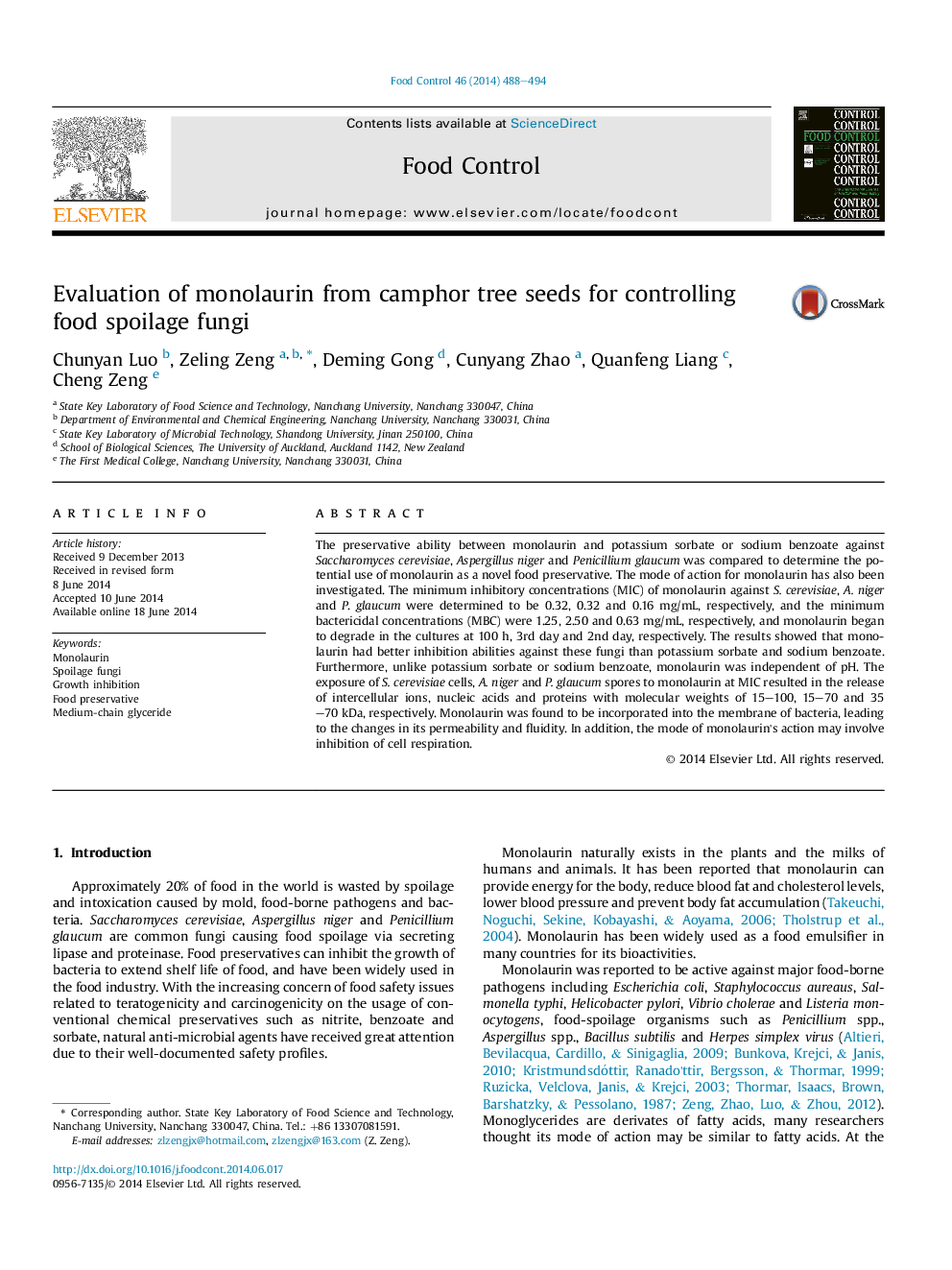| Article ID | Journal | Published Year | Pages | File Type |
|---|---|---|---|---|
| 6391282 | Food Control | 2014 | 7 Pages |
â¢Monolaurin had better inhibition abilities against food spoilage fungi than potassium sorbate and sodium benzoate.â¢Inhibition ability of monolaurin was independent of pH.â¢Monolaurin was incorporated into the membrane of bacteria.â¢Mode of monolaurin's action may involve inhibition of cell respiration.
The preservative ability between monolaurin and potassium sorbate or sodium benzoate against Saccharomyces cerevisiae, Aspergillus niger and Penicillium glaucum was compared to determine the potential use of monolaurin as a novel food preservative. The mode of action for monolaurin has also been investigated. The minimum inhibitory concentrations (MIC) of monolaurin against S. cerevisiae, A. niger and P. glaucum were determined to be 0.32, 0.32 and 0.16 mg/mL, respectively, and the minimum bactericidal concentrations (MBC) were 1.25, 2.50 and 0.63 mg/mL, respectively, and monolaurin began to degrade in the cultures at 100 h, 3rd day and 2nd day, respectively. The results showed that monolaurin had better inhibition abilities against these fungi than potassium sorbate and sodium benzoate. Furthermore, unlike potassium sorbate or sodium benzoate, monolaurin was independent of pH. The exposure of S. cerevisiae cells, A. niger and P. glaucum spores to monolaurin at MIC resulted in the release of intercellular ions, nucleic acids and proteins with molecular weights of 15-100, 15-70 and 35-70 kDa, respectively. Monolaurin was found to be incorporated into the membrane of bacteria, leading to the changes in its permeability and fluidity. In addition, the mode of monolaurin's action may involve inhibition of cell respiration.
